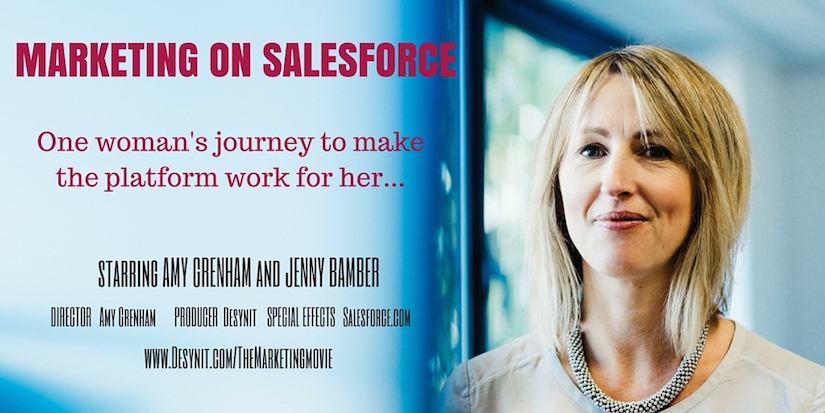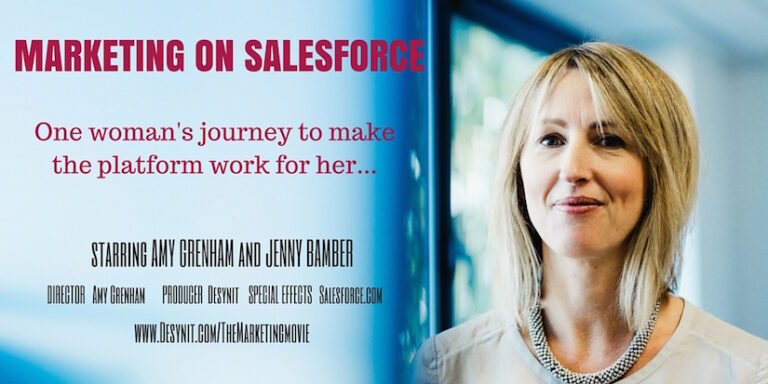
High production values
Big household names
Empowering soundtrack
Gripping stories of challenge and success
Someone should really nominate one of those Salesforce Customer Success Stories for an Oscar.
If you like your business case studies glossy and aspirational, then look no further than Salesforce.com. You’ll find stories here from Coca-Cola, GE, and even Obama’s presidential campaign, among many other high profile examples. These are stories so moving and inspirational that they transport you to another place, a place where digital is transforming people’s lives (and everyone wears amazing business attire and has great teeth). Give these guys an academy award.
That’s the great thing about watching films – you have a chance to escape reality for a while and step into someone else’s world. And that can be not so great, too: some of these beautifully crafted success stories can leave you asking the question ‘How does this apply to my organisation?’
That’s certainly the way I feel. I’m head of the marketing department at Desynit. In reality, there’s just me..I am the department. I work three days a week to deliver everything an SMB needs to market itself effectively in an increasingly crowded market space, and without a blockbuster budget. To do that, there’s a lot of things I need Salesforce to do and importantly a lot of things I really don’t need it to do.
So in an attempt to give you a ‘behind the scenes’ peek at a rather less red carpet roll out, here’s what I have Salesforce configured to deliver to me right now:-
Each of my marketing efforts are recorded in Salesforce as a separate campaign. The information captured includes date, spend (budgeted and actual), rationale, post-campaign evaluation, and everyone contacted through the campaign (leads and contacts). All of my individual campaigns are arranged into a campaign hierarchy, rolling up to parent campaigns. : e.g. parent campaign ‘Events 2016’ is divided into more specific categories e.g. ‘Desynit-led events 2016’ or ‘3rd Party events 2016’ etc, and beneath this, divided into the individual events . Every one of my parent campaigns rolls up to the top campaign level, which is Marketing 2016. The advantages to this hierarchy? Mainly that comes down to effectively analysing my results (response rate/ spend/ ROI) by campaign or by category.
While I am not a big fan of gating content, I do have a few sign up forms on our website. Some of these forms are for people wanting to join a specific mailing list (Good Systems Newsletter/ Jenny’s Admin Tips or Forcewest), and also forms to access some of our longer content pieces. From the website, these details go straight into Salesforce, and are routed directly into the correct campaign.
Once all of these pieces were in place, I was able to bring in a Marketing Automation tool. With the help of our Salesforce Administrator, Jenny, I’ve now set up Dotmailer in Salesforce to deliver a number of automated marketing workflows, triggered by specific customer actions. For example, if you sign up to receive our Salesforce Guide, then you’ll work through a program of staying in touch emails from us, with appropriate calls to action. Depending on what you do (respond to the call to action, nothing, unsubscribe) you’ll be sent along an appropriate communication journey. All of the customer actions are captured in some very user-friendly reporting dashboards.
NB This is definitely not ‘Marketing Automation’ in the fullest sense – these tools can be configured to deliver way, way more than this. However, as a proof of concept for a small business, this is a good place to start.
Results, reporting.. call it what you will. If you have all of the above up and running, then you have everything you need for get real-time accurate information at your fingertips, right under the Salesforce ‘Dashboard’ tab. Here are some of the dashboards I use weekly:-
Active campaigns with campaign members
Primary campaign revenue
Campaign influence
New leads by lead source
Converted leads by lead source
Campaign spend by lead source
Won opportunities by campaign type
All won opportunities by lead source
So that’s the wide-angle view of Desynit’s marketing set up. There are a number of other elements not included here, such as our Eventbrite integration, but I think this gives you a reasonably full picture. It’s not a configuration that would suit every business, for sure. For example, if you were delivering consumer products to a mass market via a complex ecommerce platform, then this would be a very different story. However for a B2B services provider such as ourselves, with a high value, low volume business model and long customer lead times, this is fit for purpose: I have the tools I need to deliver timely marketing efforts and effectively record and interpret the results.
Of course I have a roadmap for future improvements. To deliver this, we’ll use the same Agile methodology we use on client projects (drink our own champagne if you like), delivering ongoing iterative and continuous improvement. Overall, I am very happy with the marketing setup I have, quite proud of it even. If you wanted me to let you take a look, then I am ready for my close up.
In the spirit of absolutely honesty though, there is something else I really should add… despite the fact that we’ve used Salesforce in the business since the beginning of 2013, the marketing side was definitely not camera-ready until last year (2015).
So why was that? Are you ready for the big plot reveal…?
It seems a little obvious now, looking back, but I should have followed the process that we use in all of our client projects: that is to say, the majority of the thinking and planning needs to happen up front, on paper (or on Google docs etc, whatever you prefer). This should take place before you set virtual foot on the Salesforce.com platform. Only once you have a very clear and well documented understanding of your objectives, can you share that vision, assemble the right team, and start to deliver (we have blogged about the steps for digital transformation in more detail here).
So if you were waiting for the twist in the plot, I am sorry to disappoint you: it’s not a new story. Successful digital implementation projects all follow similar patterns…there are no new stories, just iterations on a few universal tropes. Just look at the Oscar nominations on any given year: it’s all in the telling (or retelling). Of course, like all good movies, I’ve only given you the edited highlights here. If you want a slightly more directorial cut, then drop me a line and I am happy to have a chat about getting your marketing story off the storyboard, and into production.
Finally.. our predictions for the big night? Well, winner of the best supporting technology, it has to be Salesforce.com, doesn’t it?

Our independent tech team has been servicing enterprise clients for over 15 years from our HQ in Bristol, UK. Let’s see how we can work together and get the most out of your Salesforce implementation.